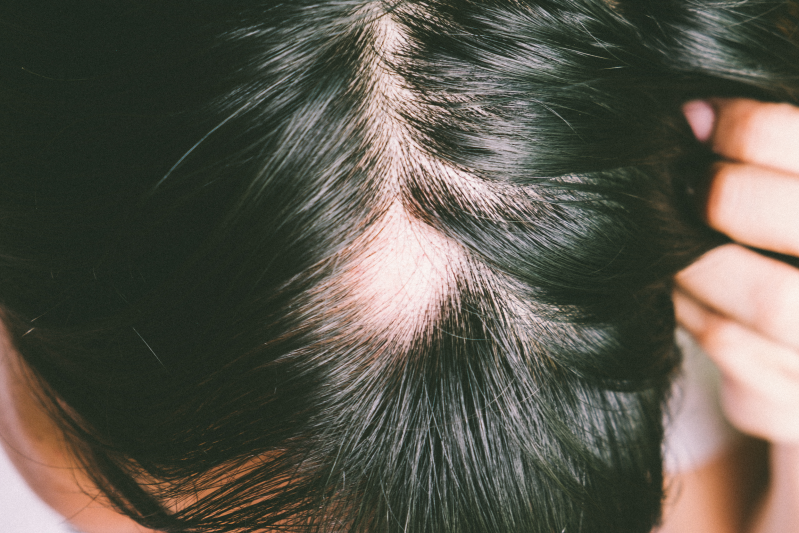-
Your concerns
Our articles to help you gain a better understanding
-
Our solutions
-
Ducray Dermatological laboratories

Spot baldness is a sudden and unexpected loss of hair in patches. It is caused by a reaction of the body against the hair follicles. What are the symptoms of this disease? How can it be treated? Find out here.
Hair loss due to spot baldness is a form of alopecia with patches of hair loss that can affect large or small areas of the scalp, sometimes even the entire scalp. It is a common disease, observed in both men and women, at any age. However, it is more frequent in children and adolescents. It affects all ethnic groups: from spot baldness in coily hair to straight hair. It can also affect the eyebrows, the beard or other areas of the body.
Spot baldness is not considered a serious disease, but it can have a significant psychological impact on those who suffer from it. Spot baldness in women often results in a deterioration of self-image and quality of life.
This type of alopecia is caused by an autoimmune disease, that is to say a sudden dysfunction of the body's immune defenses: they identify the hair follicles as a foreign body and attack them, wrongly, to eliminate them. Its mechanism is complex. Scientists don't know exactly what triggers this reaction, or even if it is related to internal factors (due to a virus or hormonal change), external factors (related to something in the environment) or a combination of both. Probably related to genetic factors, autoimmune alopecia is also sometimes seen in people who have been under intense stress.
Spot baldness can occur in people with secondary syphilis, a sexually transmitted infection. Spot baldness during syphilis is not systematic, it is thought to affect less than 1 in 100 patients.
There are several forms of spot baldness:
The evolution of spot baldness is unpredictable. It can resolve itself spontaneously and never reappear, or on the contrary recur and evolve in episodes of varying intensity and frequency.
Changes in the structure of the nails are also symptoms observed in some people with spot baldness.
It is difficult to predict the severity or duration of spot baldness when it occurs, and even more difficult to know if the hair will grow back or not.
Spot baldness can regress spontaneously with complete regrowth of hair in 6 to 18 months. The regrowth occurs gradually: first regrowth of small white hairs on the patches of hair loss, then the hair thickens and re-pigments. In other cases, on the other hand, the hair loss may become chronic and/or spread.
Some risk factors for non-regrowth of hair have been identified:
A consultation with a dermatologist is essential to make a precise diagnosis of spot baldness and define the most appropriate treatment.
When hair regrowth on patches of spot baldness is not spontaneous, a medical treatment can be prescribed. Most often, it will be based on corticosteroids, either applied to the scalp, orally, or injected into the patch. Minoxidil lotion, used in the treatment of androgenetic alopecia, is also a treatment option for spot baldness.
For more severe and recalcitrant forms, stronger treatments such as immunosuppressants (whose objective is to reduce the action of the immune defenses against the hair follicles) have demonstrated their efficacy.
Camouflage techniques, such as wigs, turbans and scarves, can help better cope with hair loss associated with spot baldness.